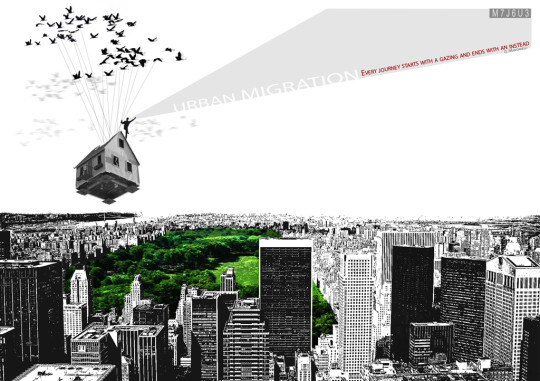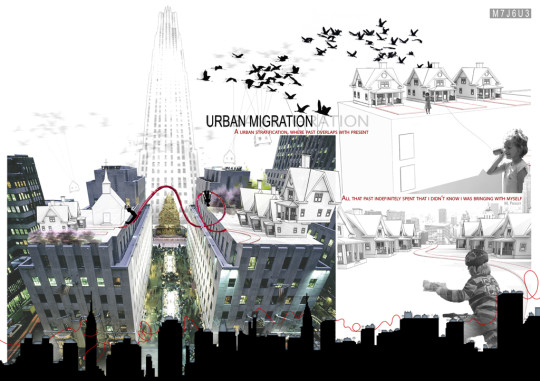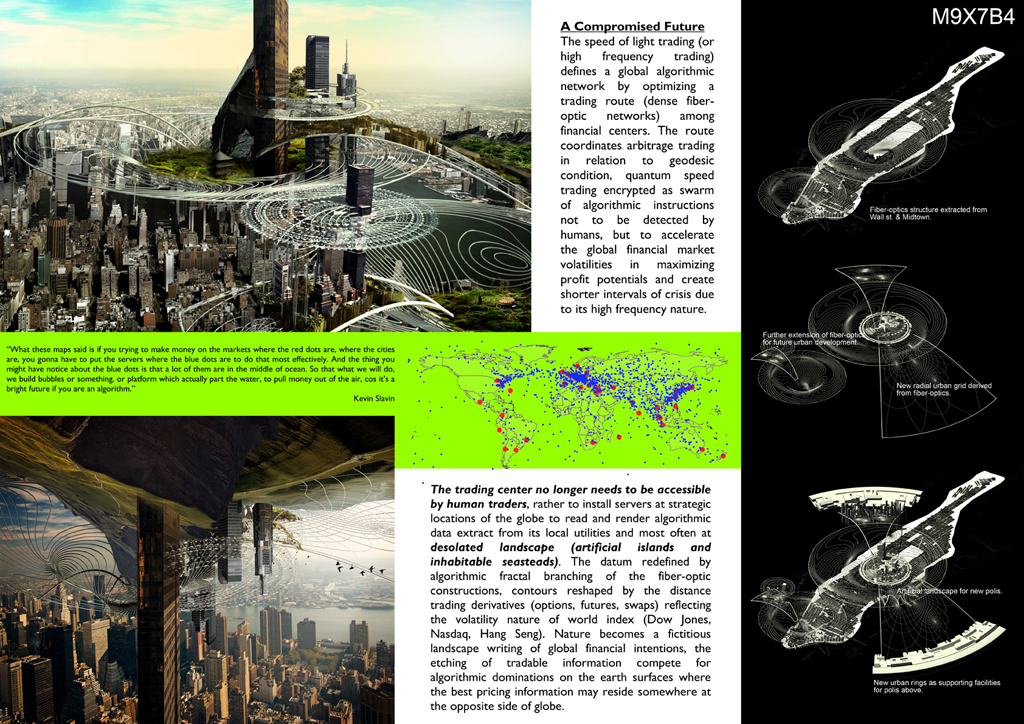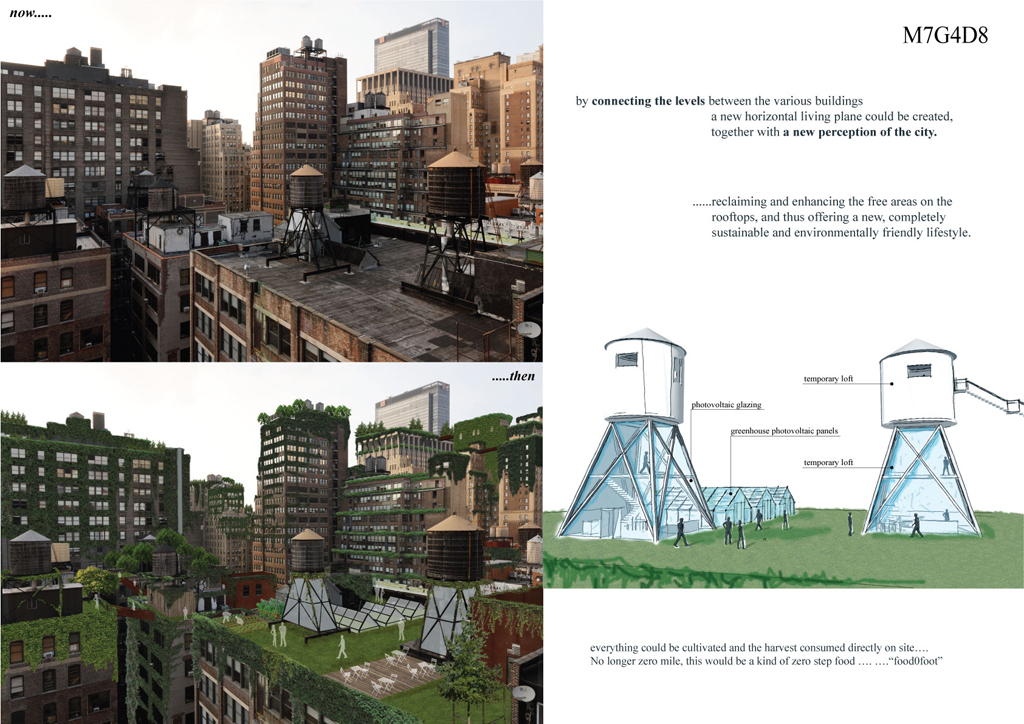Info:
Title: URBAN MIGRATION - Code: M7J6U3Contest: NY / 2012
By: C.Yume Gori Savellini - S. Infelisi
Views: 3477 Likes: 1
Votes:
JOSHUA PRINCE-RAMUS2 EVA FRANCH I GILABERT0 ROLAND SNOOKS0 SHOHEI SHIGEMATSU3 ALESSANDRO ORSINI1 MITCHELL JOACHIM51.8
URBAN MIGRATION

 According to Henri Bergson’s duration theory, human beings’ conception of time – deriving from science and techniques – alters time’s real nature. The question is: what is time’s real nature? Science’s ordinary conception of time is linear, clearly exemplified by Bergson’s metaphor of the necklace – instant following another instant. On the other hand, the real nature of time is far from science’s conception, it is something strongly linked with conscience. There is a simultaneousness of past and present in time, and Bergson explains this idea through the metaphor of the ball of thread. It illustrates a cumulative conception, where time grows around an instant, as the thread in the clew. In this point of view there is always past inside present: moreover, we would not live, perceive our present without our past.
According to Henri Bergson’s duration theory, human beings’ conception of time – deriving from science and techniques – alters time’s real nature. The question is: what is time’s real nature? Science’s ordinary conception of time is linear, clearly exemplified by Bergson’s metaphor of the necklace – instant following another instant. On the other hand, the real nature of time is far from science’s conception, it is something strongly linked with conscience. There is a simultaneousness of past and present in time, and Bergson explains this idea through the metaphor of the ball of thread. It illustrates a cumulative conception, where time grows around an instant, as the thread in the clew. In this point of view there is always past inside present: moreover, we would not live, perceive our present without our past.
We strained Bergson’s conception, including also future in the idea. Future does not exist without past, and since time’s real nature is connected with conscience, it is possible to think that time exists inside us in a continuum of past – present – future.
Besides, we have an inner memory, as Marcel Proust’s In Search of Lost Time demonstrates: the novel starts with the perception of the smell of a sweet, a madeleine, that sets off a memories’ chain, returning back to past. In the same way, the smell of a mother’s homemade bread, of genuine food, the recollection of children’s analogical games, vintage household appliances remind to contemporary New Yorkers the taste of their past.
The desire of people to keep living in the vibrant, throbbing metropolis clashes with the will of returning to a more human, authentic lifestyle, as in post-war economic boom. The typical American house migrates on the top of New Yorkskyscrapers, as if it were following the silent desire of its inhabitants for a return to interpersonal relationships and the source of certainty that is past, escaping from nowadays congestion and chaos.
Houses migrate to find their own space, over the top of every building, aiming to reach the sky – as history proved being a native human will – using an unusual, natural mean of transport: flocks of birds. A migration that follows the ancient roots of nomadism, in search of lost time.






